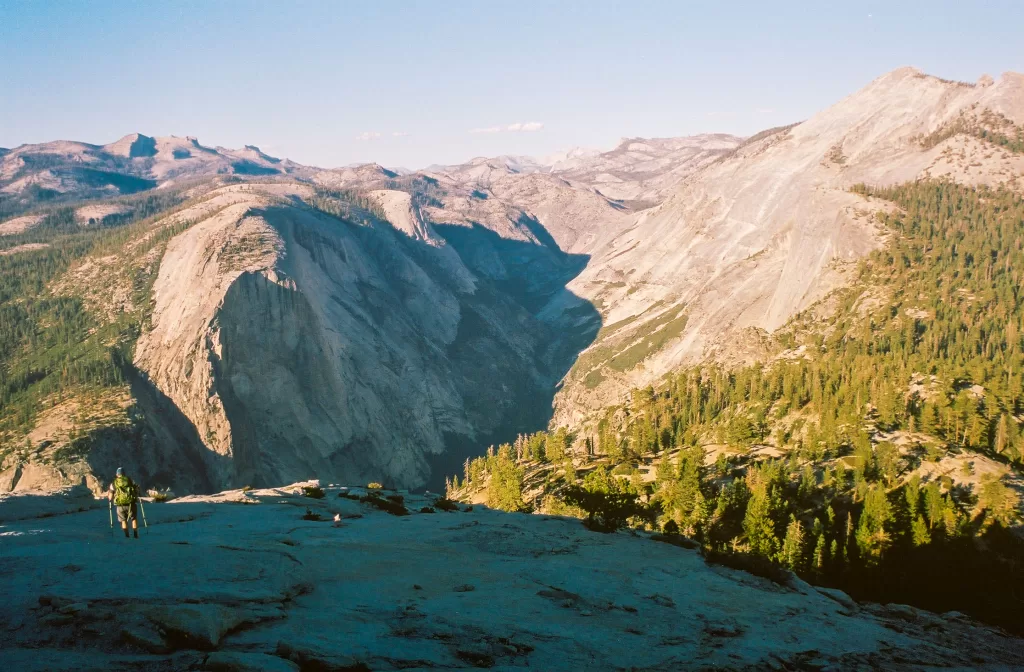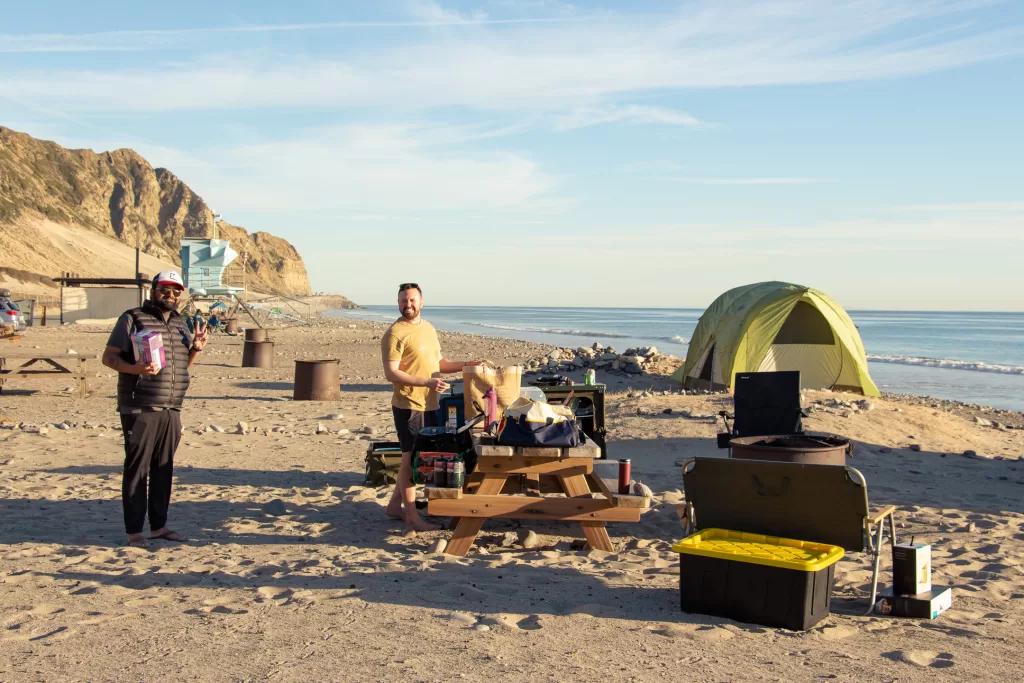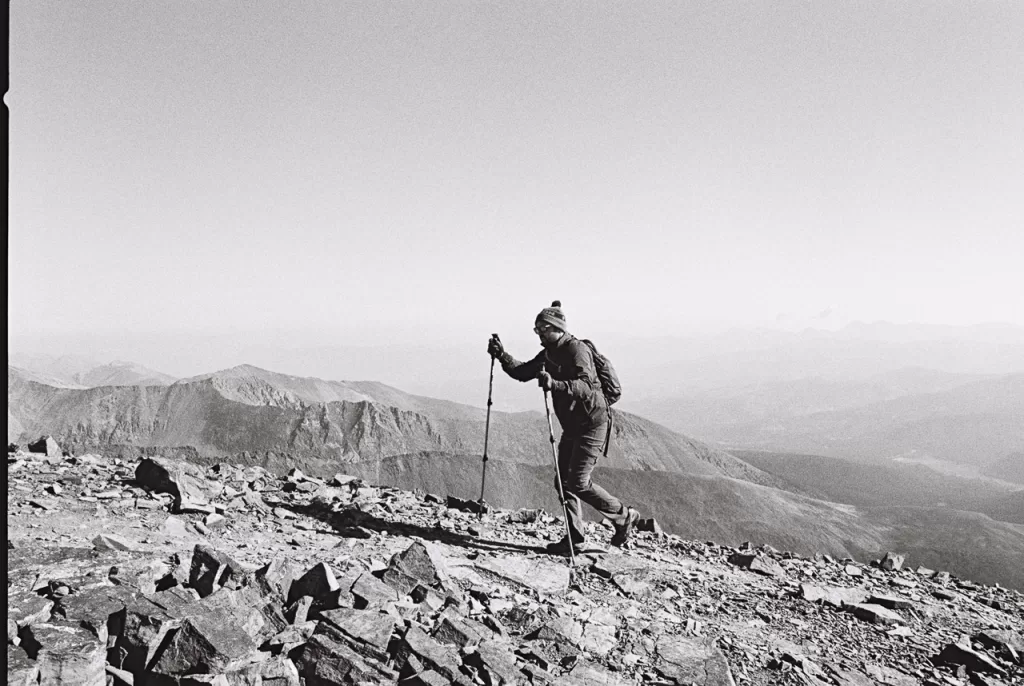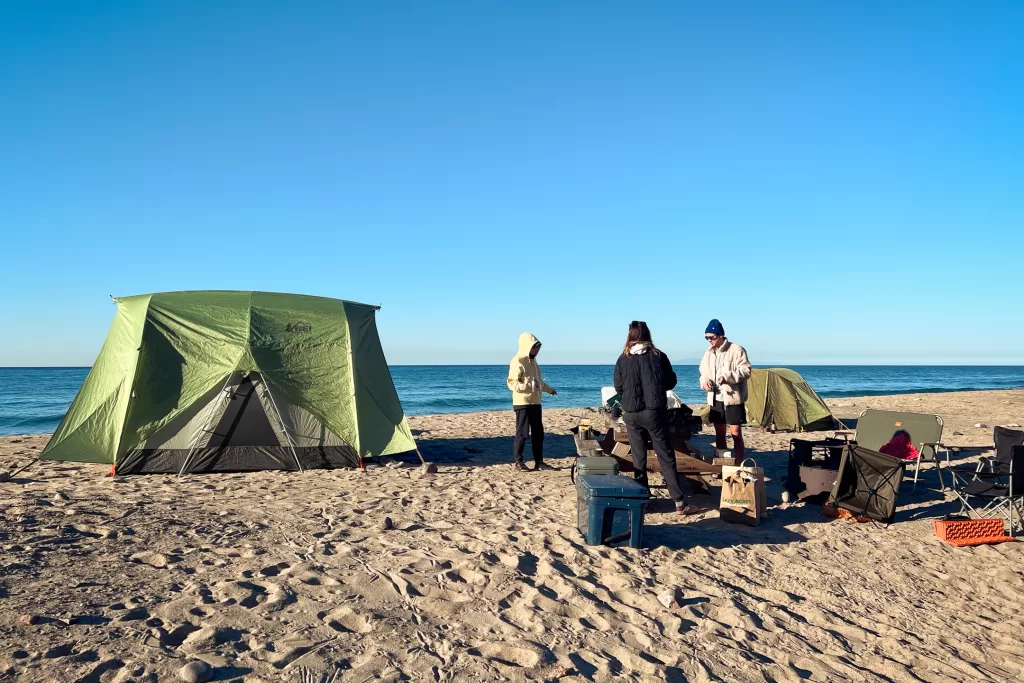Your first time backpacking is a magical experience. I still remember my first trip – a short overnight adventure in the San Gabriel Mountains with members of my Boy Scout troop. While we had our fair share of missteps, what stuck with me most was the sense of empowerment and self-reliance that came with carrying everything I needed on my back. To help you experience this same feeling without the mistakes I made, here are nine beginner backpacking tips that you should know. Follow this list and you’ll be well on your way to a successful and memorable first backpacking trip!
Choosing the Right Trail

As a beginner to backpacking, one of the most important tips is to choose a trail that won’t challenge you too much. Try to stick to a short, one-night adventure on an easier trail close to home. That way, you can figure out what works and what doesn’t in a low-risk environment. A bonus is if you can choose a trail with an established campground, as it will likely have some infrastructure such as fire rings and picnic tables. They are usually listed as trail camps or walk-in campgrounds on most maps. It’s also smart to make sure that there’s a reliable water source by your campsite, like a lake or stream. Finally, if possible try to go with an experienced backpacker or guide. Look into local hiking clubs, outfitters, or outdoor supply shops. They often hold group backpacking trips you can sign up for.
Food Choices

If you’re looking for an easy option and have some money to spare, buying pre-prepared dehydrated backpacking meals is the way to go. What I do to save weight and space when going this route is to repackage all the meals except one into ziplock bags. I then cook the unopened meal first and reuse its pouch for the rest.
For a more economical option, head to the grocery store to build your meals from scratch. When shopping, choose foods that are lightweight, calorie-dense, and nonperishable. And stay away from anything canned as they’re not worth their weight. Here’s how I recommend you structure your meals.
Keep your breakfasts and lunches simple. Oatmeal or a breakfast bar are great ways to start your day, while a tortilla wrap with summer sausage and tomato paste is a quick and easy lunch option. For dinner, I like my meals to have a carb base, a protein source, and fat. Also, bring olive oil or spice packets for added calories and flavor. In terms of snacks, energy bars, jerky, candy, and nuts are all solid choices. And if you need caffeine, consider bringing instant coffee mix or tea.
When determining how much food to bring, pack enough for each day on trail plus one more. That way you won’t go hungry if you’re in the backcountry longer than expected. Proper food storage is also very important, especially in bear country. Some places, like most of the Sierra Nevada Mountains, require bear canisters like the BV500 Journey Bear Canister. And even in places that don’t, storing your food in an Ursack is a good idea so it’s safe from bears and other critters.
Proper Gear
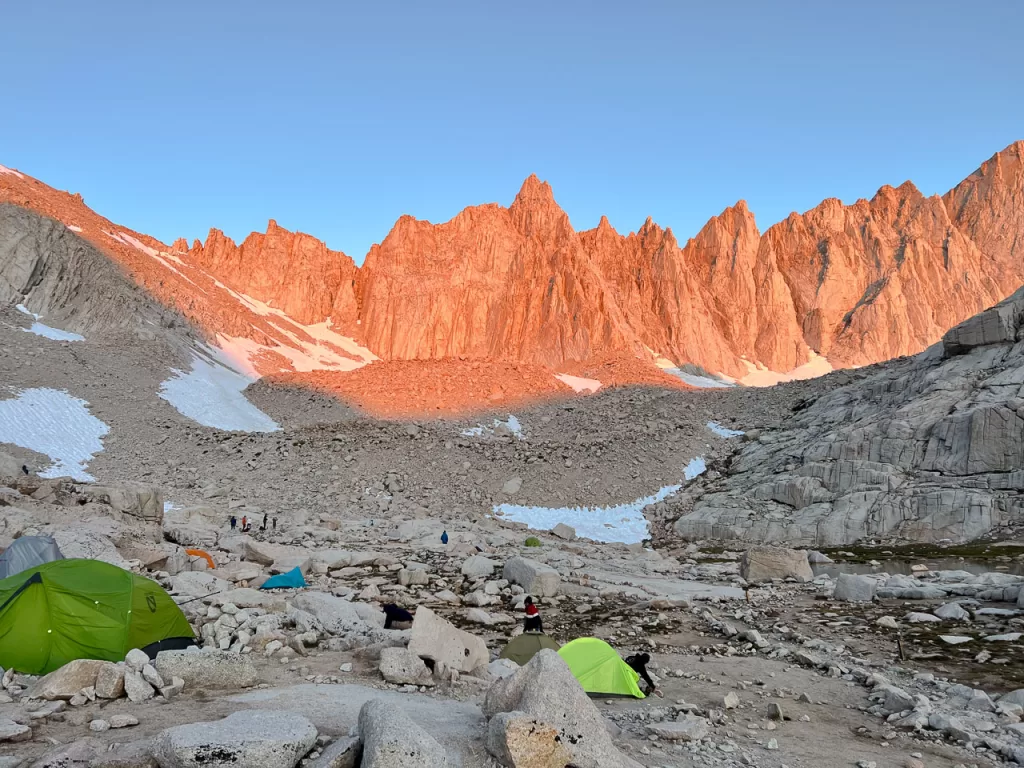
As a beginner prepping for my first time backpacking, I wish I had some tips on navigating gear, as it was overwhelming at first. While we will have an in-depth gear article soon, here are a few pointers you should know about. Your biggest and most important pieces of gear are your “big four”, or your tent, backpack, sleeping bag, and sleeping pad. These are usually your most expensive items and can greatly affect your experience on trail. Other gear categories include food and a cook system, clothes, toiletries and hygiene, safety and first-aid, and navigation. And be sure to carry the 10 essentials with you as well.
While backpacking gear can get pricey, there are several options to help lower the cost. REI offers rentals at a reasonable price, and you’ll have an opportunity to try gear out before committing to something. Places like Facebook Marketplace are also good options to get second-hand backpacking gear. Just be sure to know your torso length so you can purchase a backpack that fits your body. Finally, REI and other outdoor shops usually sell used equipment, allowing you to purchase high-quality backpacking gear at a fraction of the price.
If you’re looking for more ways to explore the outdoors on a budget, then check out our article all about ways to save money when adventuring outside!
Clothing Options
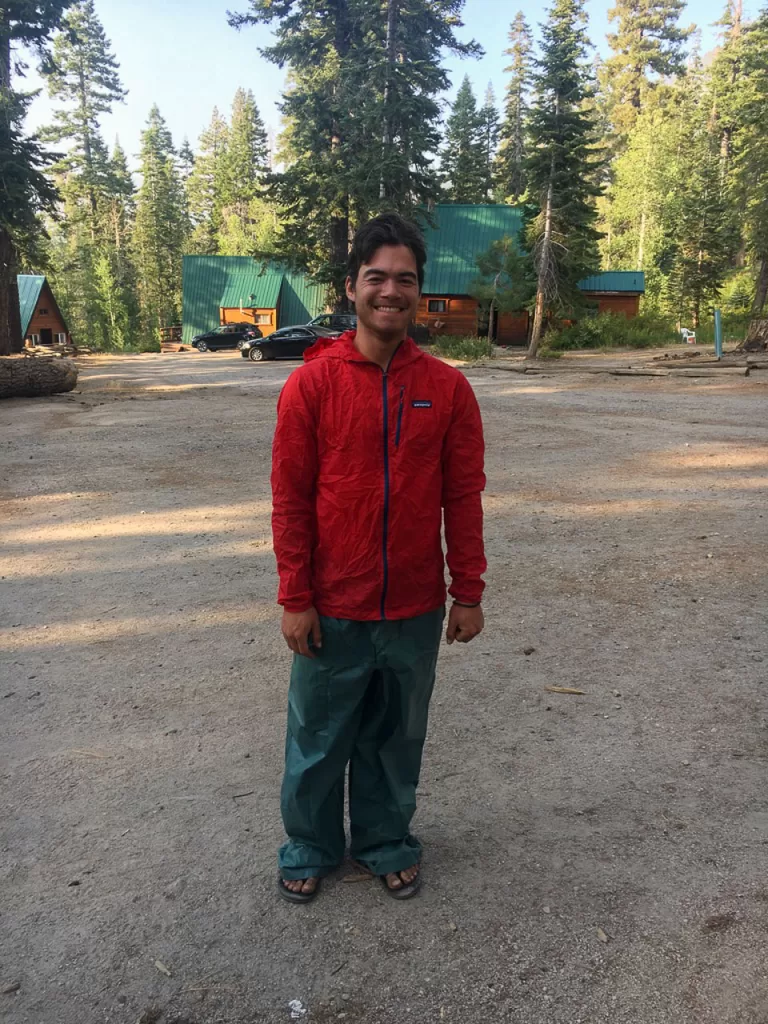
While specific clothing choices will vary depending on when and where you venture, below are general guidelines to help you choose the best clothes for your trip. Luckily, there’s no need to buy a completely new wardrobe before your first time backpacking. Your closet will likely already have all the clothes you need.
Prioritize moisture-wicking materials like polyester, nylon, or wool for your hiking outfit. Specifics depend entirely on personal preference. I personally like hiking in shorts, a long-sleeved shirt, and a trucker cap. But wearing pants (not jeans), a T-shirt, or a sun hoodie are great options too! To stay warm, make sure to bring a puffy jacket or fleece, a beanie or hood, and gloves. And in case of inclement weather, rain gear is a must. Finally, bring long underwear and sleep clothes so you’re warm in your tent at night.
While it’s tempting to bring a change of clothes for each day on the trail, it’s not needed and adds unnecessary weight to your pack. Sweat, grime, and dirt are inevitable parts of backpacking, so leave the extra outfits at home and pack just one set of clothes that you’d feel comfortable wearing for multiple days in a row. The one exception is socks. Having multiple pairs is a smart tactic to avoid blisters.
Types of Footwear
Most backpacking footwear falls into two camps: boots and trail runners. Over the ankle boots are the more traditional option, and can offer extra support and stability when hiking. However, they are heavy, not very breathable, and have a lengthy break-in period. Trail runners on the other hand have gained popularity in recent years. They are lightweight, breathable, and generally are more comfortable and easier to hike in. Their downsides include the fact that they offer less support and pose a greater injury risk.
Whichever option you choose, you want to make sure that your footwear is well broken in before your first time backpacking to help avoid blisters. I also like to wear wool socks when hiking, as they help wick moisture, are naturally antimicrobial, and are odor-resistant. I recommend the brand Darn Tough, as its socks are high quality and have a lifetime warranty.
Packing your Backpack
As a beginner to backpacking, one of the most underrated tips is packing your bag correctly. The packing method that I’ve found works best is to organize your bag by item use. Things you don’t need until you get to camp, such as your tent and sleeping bag, are at the bottom. The next layer is items you’ll reach for once or twice throughout the day, like your main meals and cook kit. This section is also where you’ll want to keep your heaviest items. Having them close to your mid-back will help your body best carry the weight. On top are things you’ll want quick access to. These include your toiletries, poop kit, and any clothing you plan on wearing throughout the day. Finally, in your accessory pockets should go small items you want access to while hiking, such as snacks, chapstick, and sunscreen.
In terms of how heavy your backpack should be, a good rule of thumb is that your full pack, including water and food, shouldn’t exceed 20 percent of your body weight. While this may restrict what you bring, it will help you separate nice-to-have items from what you truly need. I think that this is one of the most beautiful things about backpacking – it forces you to reevaluate your possessions and shows you just how little you need to thrive.
Physical and Mental Preparedness
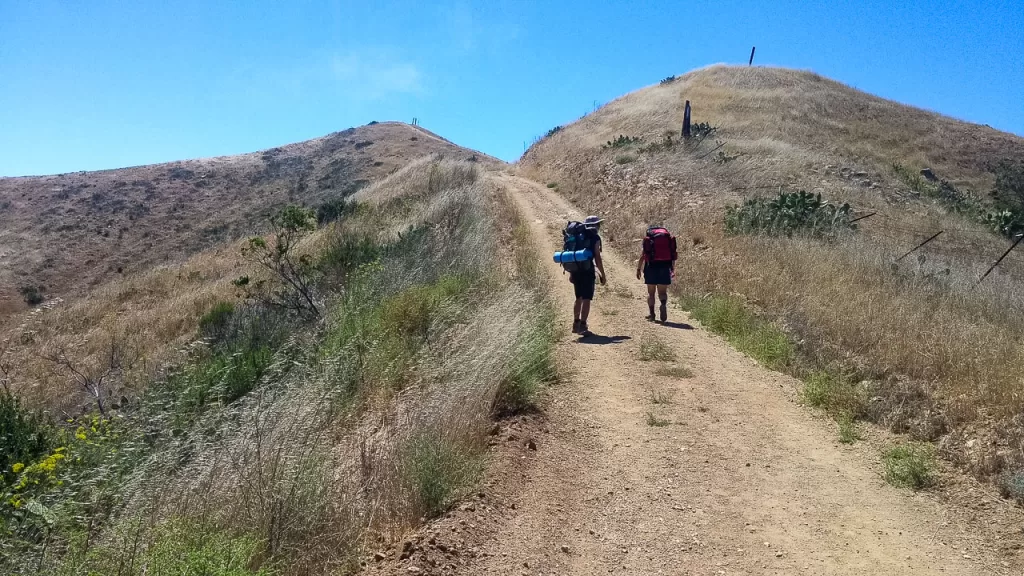
While you don’t need to train excessively for your first time backpacking, you should be comfortable with hiking at least a few miles a day with a heavy pack. Embark on a few day hikes with a loaded backpack on trails similar to your planned trip. That way, you’ll have a better idea of how your body will feel when you’re in the backcountry.
Once on your adventure, you might run into moments when you feel tired or low. What I like to do during these times is to slow down and focus on what I am seeing, hearing, and feeling in the current moment. This helps take my mind off of my troubles and fully experience the beauty around me.
It’s also important to set an intention, or a “why”, before heading out. It can be anything, from pushing yourself physically to stepping out of your comfort zone to simply spending quiet time outside. Whatever you settle on, defining a purpose will help give your trip clarity and provide an extra boost of motivation when times are tough.
Staying Safe on Trail
As you enter the backcountry, it’s important to take several precautions. Here are some safety-related beginner backpacking tips just in case something happens on trail. At a minimum, share your itinerary with a loved one back home. That way, if something goes wrong they will know where to find you. Also, carrying a device with SOS capabilities, like the iPhone 14 or 15, is not a bad idea to ensure you can contact help. Even better is to have a satellite phone like the Garmin inReach Mini 2. You can track your location, text loved ones, and check the weather. And in case your electronics stop working, carrying and knowing how to use a map and compass will ensure that you’ll always have navigation capabilities.
It’s also smart to carry a simple first-aid kit and understand how to treat common injuries on trail, like scrapes and sprains. Taking a wilderness first-aid class is not a bad idea if you need to brush up on your skills. A few places that offer these include NOLS and the American Red Cross.
Finally, check the weather before you go so you know what to expect in the backcountry. I recommend using the National Weather Service’s website for the most precise forecasts, especially in more remote locations. If conditions don’t look ideal, it’s best to pivot to a different location or reschedule your trip. Not only will bad weather make your adventure less enjoyable, but it also poses an increased safety risk.
Proper Backpacking Etiquette
You’ll want to familiarize yourself with the Leave No Trace Principles when preparing for your first time backpacking. Before leaving, make sure to check on any fire restrictions or other ordinances. Then once on trail, pack out everything you bring in (including trash and used toilet paper) and don’t take any souvenirs. Additionally, leave the land better than you found it. Stay on trail, avoid excessively disturbing the environment, and respect the wildlife. And finally, be considerate of other hikers. Practicing these guidelines will help make the outdoor experience enjoyable for all and preserve the land for future generations.
We hope that these nine beginner backpacking tips helped cultivate your excitement for adventure! Ready to plan your trip? Check out our free Outdoor Adventure Field Guide for everything to consider before, during, and after your time in the backcountry! Or for more comprehensive guidance, contact us! We can’t wait to chat with you and help turn your outdoor dreams into a reality. Click the link below to get started.


